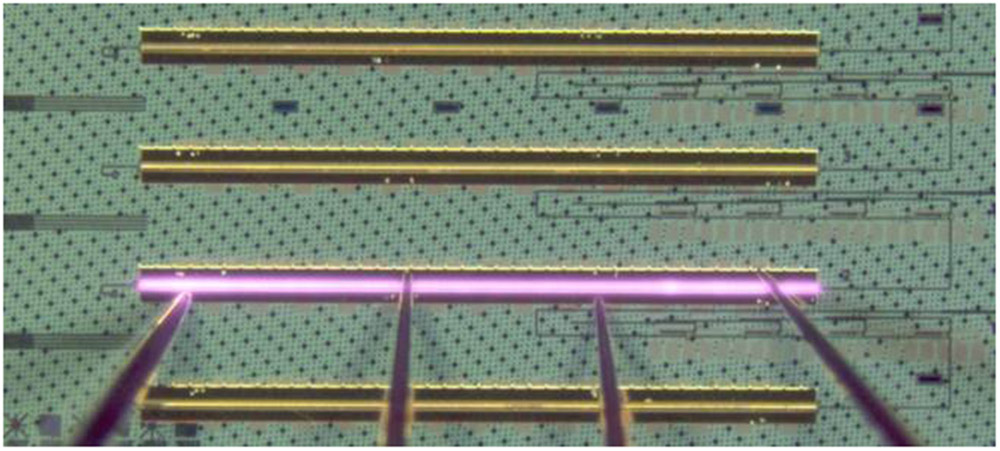News: Optoelectronics
14 July 2025
Efficient integration of quantum dot lasers on silicon chiplets
Although III-V semiconductor lasers can be monolithically integrated with photonic chips by directly growing a crystalline layer of laser material (such as indium arsenide) on silicon substrate, photonic chips with such integrated laser source are challenging to manufacture due to mismatch between structures or properties of III-V semiconductor material and silicon.
The University of California, Santa Barbara (UCSB) and a team including AIM Photonics at the Research Foundation for the State University of New York (SUNY) and Boston-based Analog Photonics have now integrated indium arsenide quantum dot (QD) lasers monolithically on silicon photonics chiplets (IEEE Journal of Lightwave Technology, vol 43, issue 12 (15 June 2025)).
“Photonic integrated circuit applications call for on-chip light sources with a small device footprint to permit denser component integration,” notes the paper’s lead author UCSB’s Dr Rosalyn Koscica. To achieve this monolithic integration, the authors combined three key concepts: the pocket laser strategy for monolithic integration, a two-step material growth scheme that includes both metal-organic chemical vapor deposition and molecular beam epitaxy (MBE) for a smaller initial gap size, and a polymer gap-fill approach to minimize optical beam divergence in the gap.

Picture: Quantum dot DBR lasers monolithically integrated on silicon photonics by in-pocket heteroepitaxy.
On testing, the chiplets with monolithically integrated lasers demonstrated sufficiently low coupling loss. As a result, the QD lasers operate efficiently on a single O-band wavelength within chiplets. The O-band wavelength is desirable as it allows for transmission of signals within photonic devices with low dispersion. Lasing in the single frequency is achieved using ring resonators made from silicon or distributed Bragg reflectors (DBR) made from silicon nitride.
“Our integrated QD lasers demonstrated a high-temperature lasing up to 105°C and a life span of 6.2 years while operating at a temperature of 35°C,” says Koscica.
The proposed integration technique can be applied to a variety of photonic integrated circuit designs, paving the way for a scalable, cost-effective monolithic integration of on-chip light sources for practical applications.









